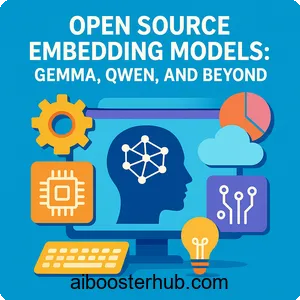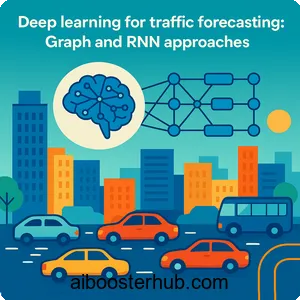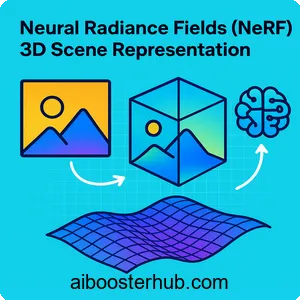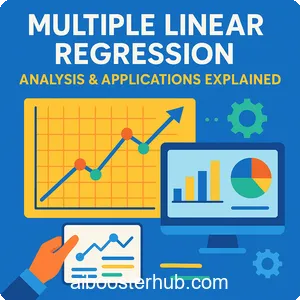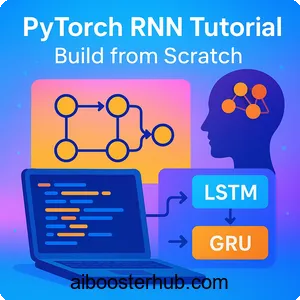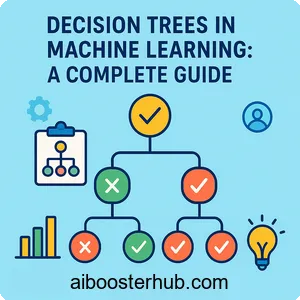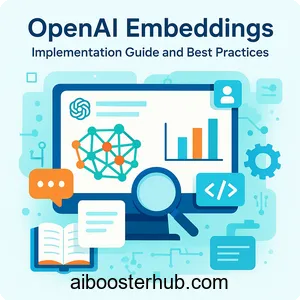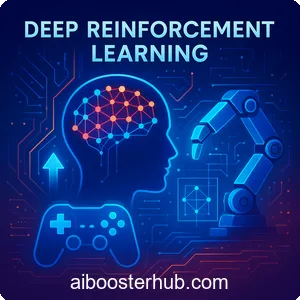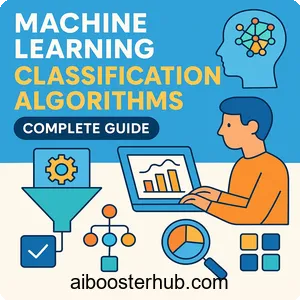Classifier-Free Guidance in Diffusion Models Explained
Diffusion models have revolutionized generative AI, powering tools like Stable Diffusion and DALL-E to create stunning images from text descriptions. At the heart of these models’ ability to generate high-quality, controllable outputs lies a technique called classifier-free guidance. This powerful method has become the de facto standard for conditional generation in diffusion models, enabling unprecedented control over the creative process without the complexity of training separate classifier networks.
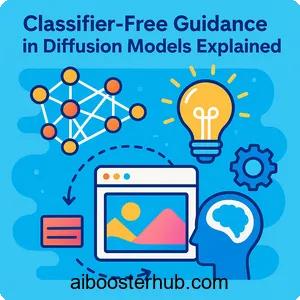
Understanding classifier-free guidance is essential for anyone working with modern deep learning systems, particularly in the realm of generative AI. This article will explore how this technique works, why it outperforms traditional classifier guidance, and how you can implement it in your own projects.
Content
Toggle1. Understanding diffusion models and conditional generation
Before diving into classifier-free guidance, we need to understand the foundation: diffusion models and how they generate content conditionally.
What are diffusion models?
Diffusion models are a class of generative models that learn to create data by reversing a gradual noising process. The training involves two key processes:
- Forward process (diffusion): Gradually adds Gaussian noise to data over \( T \) timesteps until it becomes pure noise
- Reverse process (denoising): Learns to remove noise step-by-step, reconstructing the original data
The mathematical formulation of the forward process at timestep ( t ) is:
$$ q(x_t | x_{t-1}) = \mathcal{N}(x_t; \sqrt{1-\beta_t} x_{t-1}, \beta_t I) $$
where \( \beta_t \) is the noise schedule that controls how much noise is added at each step.
The model learns to predict the noise \( \epsilon \) added to the data, which allows it to iteratively denoise from pure noise back to a clean sample. This denoising process is parameterized by a neural network \( \epsilon_\theta(x_t, t) \).
The need for conditional generation
While unconditional diffusion models can generate diverse outputs, most practical applications require control over what gets generated. Conditional generation allows us to guide the model using various conditions like:
- Text prompts (“a painting of a sunset over mountains”)
- Class labels (generating specific object categories)
- Images (for image-to-image translation)
- Sketches or layouts (for structured generation)
This is where guidance techniques become crucial. The challenge is: how do we steer the model toward generating content that matches our condition without sacrificing quality or diversity?
The classification connection
The term “classifier” in classifier guidance and classifier-free guidance comes from the connection to classification. In the original formulation, researchers used a separate classifier network to evaluate how well a noisy sample matched the desired condition. This classifier would then provide gradients to guide the denoising process toward the target class or description.
However, as we’ll see, classifier-free guidance elegantly solves this problem without needing any separate classifier at all.
2. Classifier guidance: The predecessor approach
To appreciate the innovation of classifier-free guidance, we must first understand the approach it replaced: classifier guidance.
How classifier guidance works
Classifier guidance modifies the denoising process by incorporating gradients from a noise-aware classifier. The idea is to use a classifier \( p_\phi(y|x_t, t) \) that can predict the class label \( y \) from a noisy sample \( x_t \) at timestep \( t \).
The modified sampling process becomes:
$$ \tilde{\epsilon}_\theta(x_t, t, y)
= \epsilon_\theta(x_t, t)
– \sqrt{1 – \bar{\alpha}_t} \, w \, \nabla_{x_t} \log p_\phi(y \mid x_t, t) $$
where:
- \( \epsilon_\theta(x_t, t) \) is the unconditional noise prediction
- \( w \) is the guidance scale controlling the strength of conditioning
- \( \nabla_{x_t} \log p_\phi(y|x_t, t) \) is the gradient of the log probability from the classifier
This gradient term pushes the generation toward samples that the classifier believes belong to class \( y \).
Implementation example
Here’s a simplified Python implementation showing the concept:
import torch
def classifier_guided_sampling(model, classifier, x_t, t, y, guidance_scale=1.0):
"""
Perform one step of classifier-guided sampling.
Args:
model: The diffusion model
classifier: Noise-aware classifier
x_t: Noisy sample at timestep t
t: Current timestep
y: Target class/condition
guidance_scale: Strength of guidance
"""
# Enable gradient computation for x_t
x_t.requires_grad = True
# Get unconditional noise prediction
epsilon_uncond = model(x_t, t)
# Get classifier prediction
log_prob = classifier(x_t, t).log_softmax(dim=-1)[y]
# Compute gradient
grad = torch.autograd.grad(log_prob.sum(), x_t)[0]
# Apply guidance
alpha_bar_t = get_alpha_bar(t)
epsilon_guided = epsilon_uncond - torch.sqrt(1 - alpha_bar_t) * guidance_scale * grad
return epsilon_guided
Limitations of classifier guidance
Despite its effectiveness, classifier guidance has several significant drawbacks:
- Training complexity: Requires training a separate noise-aware classifier on noisy data at all timesteps
- Limited flexibility: The classifier must be retrained for different conditioning types (text, images, etc.)
- Computational overhead: Running both the diffusion model and classifier during inference
- Gradient quality: Classifier gradients can be noisy or unreliable, especially at high noise levels
- Dataset requirements: Need labeled data to train the classifier
These limitations motivated researchers to develop a more elegant solution: classifier-free guidance.
3. Classifier-free guidance: A unified approach
Classifier-free guidance eliminates the need for a separate classifier by training a single conditional diffusion model that can perform both conditional and unconditional generation.
The core concept
The key insight is remarkably simple: train one model that can do both conditional generation \( \epsilon_\theta(x_t, t, c) \) and unconditional generation \( \epsilon_\theta(x_t, t) \) by randomly dropping the conditioning information during training.
During training, the condition \( c \) is randomly replaced with a null condition \( \emptyset \) with probability \( p_{\text{uncond}} \) (typically 10-20%). This teaches the model two things simultaneously:
- How to generate samples matching a specific condition
- How to generate samples without any condition
The mathematical formulation
During inference, classifier-free guidance combines these two predictions using a guidance scale ( w ):
$$\tilde{\epsilon}_\theta(x_t, t, c)
= \epsilon_\theta(x_t, t, \emptyset)
+ w \, \big( \epsilon_\theta(x_t, t, c) – \epsilon_\theta(x_t, t, \emptyset) \big) $$
This can be rewritten as:
$$\tilde{\epsilon}_\theta(x_t, t, c)
= (1 + w) \, \epsilon_\theta(x_t, t, c)
– w \, \epsilon_\theta(x_t, t, \emptyset)$$
The intuition is powerful: we’re moving away from the unconditional prediction toward the conditional prediction, with the guidance scale \( w \) controlling how far we move. When \( w = 0 \), we get the conditional prediction. As \( w \) increases, we amplify the difference between conditional and unconditional predictions.
Why this works: The implicit classifier
The term \( \epsilon_\theta(x_t, t, c) – \epsilon_\theta(x_t, t, \emptyset) \) can be understood as an implicit classifier gradient. By subtracting the unconditional prediction from the conditional one, we’re effectively computing how the condition changes the model’s belief about what the denoised image should look like.
This difference captures the same information that an explicit classifier would provide, but it comes directly from the diffusion model itself, which already understands the data distribution intimately.
Training implementation
Here’s how to implement classifier-free guidance training in Python:
import torch
import torch.nn as nn
class ConditionalDiffusionModel(nn.Module):
def __init__(self, unet, condition_dim, p_uncond=0.1):
super().__init__()
self.unet = unet
self.condition_dim = condition_dim
self.p_uncond = p_uncond
# Learnable null condition embedding
self.null_condition = nn.Parameter(torch.randn(1, condition_dim))
def forward(self, x_t, t, condition):
"""
Forward pass with random condition dropping.
Args:
x_t: Noisy input [batch_size, channels, height, width]
t: Timestep [batch_size]
condition: Conditioning vector [batch_size, condition_dim]
"""
# Randomly replace conditions with null condition
if self.training:
mask = torch.rand(x_t.shape[0], 1, device=x_t.device) < self.p_uncond
condition = torch.where(mask, self.null_condition.expand_as(condition), condition)
# Predict noise
epsilon = self.unet(x_t, t, condition)
return epsilon
def train_step(model, x_0, condition, timestep):
"""Single training step for classifier-free guidance."""
# Sample noise
noise = torch.randn_like(x_0)
# Add noise to get x_t
x_t = add_noise(x_0, noise, timestep)
# Predict noise (with random condition dropping)
predicted_noise = model(x_t, timestep, condition)
# Compute loss
loss = nn.functional.mse_loss(predicted_noise, noise)
return loss
Sampling with classifier-free guidance
During inference, we perform two forward passes and combine them:
def sample_with_cfg(model, x_t, t, condition, guidance_scale=7.5):
"""
Sample one step using classifier-free guidance.
Args:
model: Trained conditional diffusion model
x_t: Current noisy sample
t: Current timestep
condition: Conditioning information
guidance_scale: Guidance strength (typically 5-15)
"""
# Unconditional prediction
epsilon_uncond = model(x_t, t, model.null_condition.expand(x_t.shape[0], -1))
# Conditional prediction
epsilon_cond = model(x_t, t, condition)
# Apply classifier-free guidance
epsilon_guided = epsilon_uncond + guidance_scale * (epsilon_cond - epsilon_uncond)
# Denoise one step (using DDPM or DDIM sampling)
x_t_minus_1 = denoise_step(x_t, epsilon_guided, t)
return x_t_minus_1
def full_sampling_loop(model, shape, condition, guidance_scale=7.5, num_steps=50):
"""Complete sampling loop with classifier-free guidance."""
# Start from pure noise
x_t = torch.randn(shape)
# Iteratively denoise
for t in reversed(range(num_steps)):
x_t = sample_with_cfg(model, x_t, t, condition, guidance_scale)
return x_t
4. The impact of model guidance on generation quality
The guidance scale parameter is crucial for controlling the quality-diversity tradeoff in conditional generation.
Understanding the guidance scale
The guidance scale \( w \) determines how strongly the model adheres to the condition:
- Low guidance (w = 1-3): Generates diverse outputs with weaker adherence to the condition. Images may be more creative but less accurate to the prompt.
- Medium guidance (w = 5-8): Balanced approach, typical default for most applications. Good alignment with conditions while maintaining quality.
- High guidance (w = 10-20): Strong adherence to condition, but may produce oversaturated, overexposed, or distorted images.
Practical example with Stable Diffusion
Consider generating images with the prompt “a serene lake at sunset”:
from diffusers import StableDiffusionPipeline
pipe = StableDiffusionPipeline.from_pretrained("stabilityai/stable-diffusion-2-1")
prompt = "a serene lake at sunset, photorealistic, 4k"
# Low guidance - more creative but less prompt adherence
image_low = pipe(prompt, guidance_scale=3.0).images[0]
# Medium guidance - balanced
image_medium = pipe(prompt, guidance_scale=7.5).images[0]
# High guidance - strong prompt adherence
image_high = pipe(prompt, guidance_scale=15.0).images[0]
With low guidance, you might get beautiful landscapes that don’t always feature a lake. With high guidance, you’ll definitely get a lake at sunset, but the colors might be unnaturally vivid.
The quality-diversity tradeoff
This tradeoff is fundamental to model guidance:
- Higher guidance: Increases sample quality as measured by metrics like FID (Fréchet Inception Distance) for the specified condition, but reduces output diversity
- Lower guidance: Increases diversity and creativity, but may reduce adherence to the conditioning signal
The optimal guidance scale depends on your application:
- Creative applications: Lower guidance (3-5) for more variation
- Precise specifications: Medium to high guidance (7-12) for accurate results
- Photorealistic generation: Medium guidance (6-8) to avoid oversaturation
Negative prompting: An extension
An important extension of classifier-free guidance is negative prompting, which allows you to specify what you don’t want:
$$ \tilde{\epsilon} = \epsilon_{\text{neg}} + w \cdot (\epsilon_{\text{cond}} – \epsilon_{\text{neg}}) $$
where \( \epsilon_{\text{neg}} \) is the prediction conditioned on the negative prompt instead of the null condition.
def sample_with_negative_prompt(model, x_t, t, positive_condition,
negative_condition, guidance_scale=7.5):
"""Sampling with both positive and negative prompts."""
# Negative prompt prediction
epsilon_neg = model(x_t, t, negative_condition)
# Positive prompt prediction
epsilon_pos = model(x_t, t, positive_condition)
# Apply guidance away from negative, toward positive
epsilon_guided = epsilon_neg + guidance_scale * (epsilon_pos - epsilon_neg)
return denoise_step(x_t, epsilon_guided, t)
This allows prompts like:
- Positive: “a beautiful portrait”
- Negative: “blurry, low quality, distorted”
5. Comparing classifier guidance and classifier-free guidance
Let’s directly compare these two approaches across multiple dimensions to understand why classifier-free guidance has become the standard.
Training requirements
Classifier guidance:
- Requires training two separate models: the diffusion model and a noise-aware classifier
- Classifier must be trained on noisy data at all timesteps
- Need labeled datasets for classifier training
- More complex training pipeline with two optimization processes
Classifier-free guidance:
- Single model training with random condition dropping
- No additional networks required
- Can work with any conditioning signal without retraining
- Simpler training pipeline
Inference efficiency
Classifier guidance:
- Requires two forward passes: diffusion model + classifier
- Needs gradient computation through the classifier
- Higher memory usage during sampling
- Slower due to backpropagation through classifier
Classifier-free guidance:
- Requires two forward passes through the same model
- No gradient computation needed
- Can batch unconditional and conditional predictions together
- More efficient with proper implementation
Here’s an efficiency comparison:
import time
def benchmark_guidance_methods(model, classifier, x_t, t, condition, iterations=100):
"""Compare inference speed of both methods."""
# Classifier guidance timing
start = time.time()
for _ in range(iterations):
x_t.requires_grad = True
epsilon_uncond = model(x_t, t)
log_prob = classifier(x_t, t)[condition]
grad = torch.autograd.grad(log_prob, x_t)[0]
epsilon_guided = epsilon_uncond - 7.5 * grad
classifier_time = time.time() - start
# Classifier-free guidance timing
start = time.time()
for _ in range(iterations):
# Can batch both predictions
x_batch = torch.cat([x_t, x_t])
t_batch = torch.cat([t, t])
c_batch = torch.cat([null_condition, condition])
epsilon_batch = model(x_batch, t_batch, c_batch)
epsilon_uncond, epsilon_cond = epsilon_batch.chunk(2)
epsilon_guided = epsilon_uncond + 7.5 * (epsilon_cond - epsilon_uncond)
cfg_time = time.time() - start
print(f"Classifier guidance: {classifier_time:.3f}s")
print(f"Classifier-free guidance: {cfg_time:.3f}s")
print(f"Speedup: {classifier_time/cfg_time:.2f}x")
Flexibility and generalization
Classifier guidance:
- Limited to conditioning types the classifier was trained for
- Difficult to extend to new conditioning signals
- Cannot easily combine multiple conditions
- Classifier may not generalize well to out-of-distribution conditions
Classifier-free guidance:
- Works with any conditioning signal (text, images, layouts, etc.)
- Easy to extend to multi-conditional generation
- Better generalization through the diffusion model’s learned representations
- Can seamlessly handle composite conditions
Generation quality
Classifier guidance:
- Quality depends on classifier accuracy
- Can suffer from adversarial gradients at high noise levels
- May produce artifacts from gradient instabilities
- Limited by classifier’s understanding of the condition
Classifier-free guidance:
- More stable gradients from the diffusion model itself
- Better quality-diversity tradeoff
- Produces more coherent results
- Leverages the full capacity of the diffusion model
Summary comparison table
| Aspect | Classifier Guidance | Classifier-Free Guidance |
|---|---|---|
| Training | Two separate models | Single model |
| Flexibility | Limited to classifier classes | Any conditioning type |
| Inference speed | Slower (gradient computation) | Faster (no gradients) |
| Memory usage | Higher | Lower |
| Quality | Good but unstable | Excellent and stable |
| Implementation | Complex | Simple |
| Industry adoption | Rare | Standard |
6. Applications in Stable Diffusion and modern generative AI
Classifier-free guidance has become the backbone of modern generative AI systems, particularly in large-scale applications.
Stable Diffusion architecture
Stable Diffusion, one of the most popular open-source text-to-image models, relies heavily on classifier-free guidance. The architecture consists of:
- Text encoder: CLIP text encoder converts prompts into embeddings
- Latent diffusion: Operates in a compressed latent space for efficiency
- U-Net denoiser: Conditional model trained with classifier-free guidance
- VAE decoder: Converts latents back to pixel space
During training, text conditions are randomly dropped (typically 10% of the time), enabling the model to learn both conditional and unconditional generation.
Text-to-image generation
The standard pipeline for text-to-image generation with classifier-free guidance:
import torch
from transformers import CLIPTextModel, CLIPTokenizer
from diffusers import AutoencoderKL, UNet2DConditionModel, DDIMScheduler
class TextToImagePipeline:
def __init__(self):
# Load components
self.text_encoder = CLIPTextModel.from_pretrained("openai/clip-vit-large-patch14")
self.tokenizer = CLIPTokenizer.from_pretrained("openai/clip-vit-large-patch14")
self.vae = AutoencoderKL.from_pretrained("stabilityai/sd-vae-ft-mse")
self.unet = UNet2DConditionModel.from_pretrained("stabilityai/stable-diffusion-2-1", subfolder="unet")
self.scheduler = DDIMScheduler.from_pretrained("stabilityai/stable-diffusion-2-1", subfolder="scheduler")
def encode_prompt(self, prompt, negative_prompt=""):
"""Encode text prompts to embeddings."""
# Tokenize
text_input = self.tokenizer(prompt, padding="max_length",
max_length=77, return_tensors="pt")
# Encode positive prompt
text_embeddings = self.text_encoder(text_input.input_ids)[0]
# Encode negative prompt
uncond_input = self.tokenizer(negative_prompt, padding="max_length",
max_length=77, return_tensors="pt")
uncond_embeddings = self.text_encoder(uncond_input.input_ids)[0]
return text_embeddings, uncond_embeddings
def denoise_latents(self, latents, text_embeddings, uncond_embeddings,
guidance_scale=7.5, num_steps=50):
"""Denoise latents with classifier-free guidance."""
self.scheduler.set_timesteps(num_steps)
for t in self.scheduler.timesteps:
# Expand latents for classifier-free guidance
latent_model_input = torch.cat([latents] * 2)
# Concatenate embeddings [uncond, cond]
text_embeds = torch.cat([uncond_embeddings, text_embeddings])
# Predict noise
noise_pred = self.unet(latent_model_input, t,
encoder_hidden_states=text_embeds).sample
# Split and apply guidance
noise_pred_uncond, noise_pred_cond = noise_pred.chunk(2)
noise_pred = noise_pred_uncond + guidance_scale * (
noise_pred_cond - noise_pred_uncond
)
# Denoise step
latents = self.scheduler.step(noise_pred, t, latents).prev_sample
return latents
def generate(self, prompt, negative_prompt="", guidance_scale=7.5,
height=512, width=512, num_steps=50):
"""Full generation pipeline."""
# Encode prompts
text_emb, uncond_emb = self.encode_prompt(prompt, negative_prompt)
# Initialize latents
latents = torch.randn((1, 4, height//8, width//8))
# Denoise
latents = self.denoise_latents(latents, text_emb, uncond_emb,
guidance_scale, num_steps)
# Decode to image
with torch.no_grad():
image = self.vae.decode(latents / 0.18215).sample
return image
# Usage
pipeline = TextToImagePipeline()
image = pipeline.generate(
prompt="a majestic mountain landscape with aurora borealis, highly detailed",
negative_prompt="blurry, low quality, distorted",
guidance_scale=8.0
)
Image-to-image translation
Classifier-free guidance also powers image-to-image applications where we condition on both text and a source image:
def img2img_with_cfg(pipeline, source_image, prompt, strength=0.75, guidance_scale=7.5):
"""
Image-to-image generation with classifier-free guidance.
Args:
source_image: Starting image tensor
prompt: Text description of desired output
strength: How much to transform (0=no change, 1=completely new)
guidance_scale: CFG strength
"""
# Encode source image to latent space
with torch.no_grad():
latents = pipeline.vae.encode(source_image).latent_dist.sample() * 0.18215
# Determine start timestep based on strength
num_steps = 50
start_step = int(num_steps * (1 - strength))
# Add noise to latents
noise = torch.randn_like(latents)
latents = pipeline.scheduler.add_noise(latents, noise,
pipeline.scheduler.timesteps[start_step])
# Denoise with text guidance
text_emb, uncond_emb = pipeline.encode_prompt(prompt)
latents = pipeline.denoise_latents(latents, text_emb, uncond_emb,
guidance_scale, num_steps - start_step)
# Decode
image = pipeline.vae.decode(latents / 0.18215).sample
return image
Inpainting and outpainting
Classifier-free guidance enables sophisticated editing operations by conditioning on masked regions:
- Inpainting: Fill masked areas while preserving unmasked regions
- Outpainting: Extend images beyond their borders coherently
- Object removal: Mask unwanted objects and regenerate
Other applications in deep learning
Beyond images, classifier-free guidance has been successfully applied to:
- Audio generation: Text-to-audio models for music and sound effects
- Video synthesis: Extending diffusion to temporal consistency
- 3D generation: Text-to-3D and image-to-3D pipelines
- Molecular design: Conditional molecule generation in drug discovery
- Motion synthesis: Character animation from text descriptions
The versatility of classifier-free guidance makes it applicable to virtually any conditional generation task in deep learning, cementing its position as a foundational technique in generative AI.
7. Conclusion
Classifier-free guidance represents a elegant solution to one of the fundamental challenges in generative AI: how to control what a model creates without sacrificing quality or requiring complex auxiliary systems. By training a single model to handle both conditional and unconditional generation, this approach has simplified the architecture of modern diffusion models while simultaneously improving their performance.
The impact of classifier-free guidance extends far beyond academic interest. It has become the standard approach in production systems like Stable Diffusion, DALL-E, and countless other generative AI applications. Its simplicity, flexibility, and effectiveness make it an essential technique for anyone working with diffusion models or conditional generation. As generative AI continues to evolve, classifier-free guidance will undoubtedly remain a cornerstone technology, enabling ever more sophisticated and controllable creative tools.

